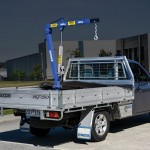Walk into a tackle store and you’ll be overwhelmed by all the choices you’d need to make – from lures and rods, to poles and fishing leader lines. The fishing leader line is one of the most underestimated pieces of equipment which is a crucial element in the fishing process.
A leader line is a thread which attaches to the line and the other end attaches to either the fly or the tippet. Leader lines can range in length from 3 to 10 meters. They’re tapered and once they reach an unsuitable thickness, a tipped is needed between the fly and the leader. Leaders vary in thickness, length and strength. Moreover, they are essential for increasing the chance of successfully catching a fish.
A quality fishing leader line is designed so that it doesn’t appear in the water – it’s practically invisible, fooling the fish into thinking that a fly is food instead of a bait. Leaders are made from thinner, lighter materials than fly lines and thus cause far less disturbance when they hit the water. This makes them less likely to scare timid fish away.

They’re positioned directly after the fly line, which is tied to the end of the leader, also known as a tippet. Leaders are connected to the fly through tough braided, monofilament or welded loops. Many new fly lines have a braided loop attached to the end so that the leader can simply be attached without attaching the loop to the fly line beforehand. If the fly line doesn’t have a pre-fitted loop, you can attach one with a secure nail knot. Some anglers use superglue to strengthen this joint, but you have to be very careful when using superglue, because it can cause a stiff joint. This results in unnatural action, which greatly disrupts the accuracy of the cast.
As aforementioned, leaders are clear and tapered lines that are commonly between the 3 and 10 meters length range. Although shorter and longer leaders are available, they’re very uncommon. The thick and wide part that is attached to the fly line is known as the butt end and the leader tapers down to a fine, thin end known as the tippet, onto which the fly is connected to.
As you can see, selecting the correct leader is of great importance for a successful fishing. In order to choose the correct tippets and leader, you should know which types of fish you plan on catching and the location where you want to fish. Additionally, the length and weight capacity are also important, as well as the flies you intend to use. Carefully considering all these things will certainly help you to purchase leaders and tippets with much more confidence.


